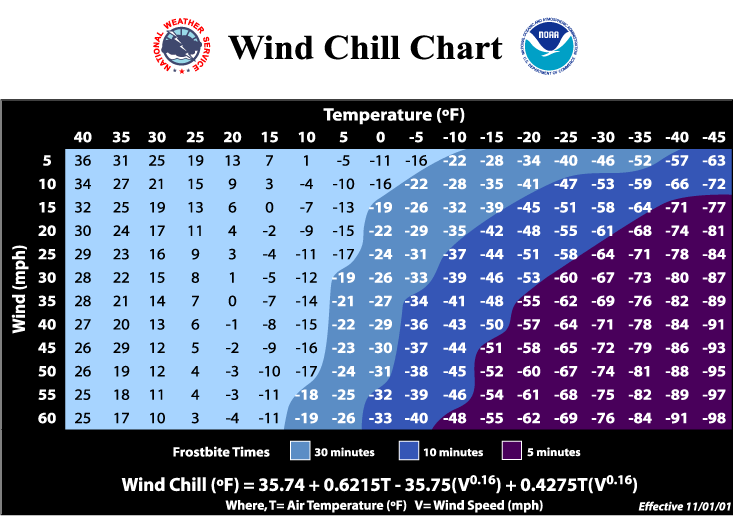Posts Tagged ‘Wind Chill Factors’
Surviving Winter! By Our January Student Pharmacist, Zach Rawn.
Winter is finally here! With winter, we could see some cold temperatures, which increase the risk of frostbite. Frostbite is structural damage to the body caused by prolonged exposure to cold temperatures.
Symptoms of frostbite:
- Cold, tingling, and/or numb skin.
- Skin color changes to a white/grey color.
- Skin changes consistent with a waxy texture or increased hardness.
- Difficulty moving the affected area – e.g. clumsy fingers.
- Blisters with bodily fluids collecting inside.
- SEVERE: areas of black (dead) skin.
If you come into contact with a person who may have frostbite (including yourself):
- Help the person get to a warmer environment as soon as possible.
- Inspect/ask the person if they have any wet clothing – remove if applicable.
- Attempt to warm the affected area.
Warm the area by:
- Submersing the affected area into warm, comfortable water (NOT hot water).
- If unable to access warm water or the area is not capable of being submersed, attempt to use body heat – for example, put affected hand inside armpit.
- Cover with dry blanket, towel, clothes, etc.
Avoid causing damage to the skin or worsening the damage:
- Try not to be mobile or utilize feet that may have frostbite, unless necessary to move to a warmer environment.
- Do not rub the area intensely.
- Do not warm numb skin with a stove or a fire due to the risk for burning the skin by accident.
If skin and affected area does not return to normal after attempting to warm the area, seek medical attention as soon as possible.
Medically, frostbite is treated with one or more of the following:
- Warming the area with water – This can cause pain, but doctors can prescribe medications to help ease the pain.
- Medications that aid with blood flow or work to prevent blood clots – immobility and frostbite can increase the risk of blood clots, which can be very dangerous.
- A tetanus shot – to prevent the infections of a microorganism that lives in the soil and causes infection.
- Antibiotics – to prevent the infections of other bacteria.
- Surgery/amputation to remove dead skin or a damaged appendage (severe frostbite).
What can you do to prevent frostbite?
- Cover your skin!
- Wear the necessary clothing for the conditions – A hat, gloves/mittens, sunglasses/goggles, etc.
- Wear clothing in layers.
- Wear water resistant footwear.
Other helpful tips:
- Avoid direct contact with metals and water.
- Know the temperature and wind chill.
- Let people know where you will be and/or when you expect to be back if traveling in the elements.
- Have emergency supplies in your vehicle.
Resource:
UpToDate. Frostbite. Available online at: http://www.uptodate.com.proxy.lib.ohio-state.edu/contents/frostbite?source=search_result&search=frostbite&selectedTitle=1~40#PATIENT_INFORMATION. Updated April 20, 2015. Accessed January 13, 2016.




